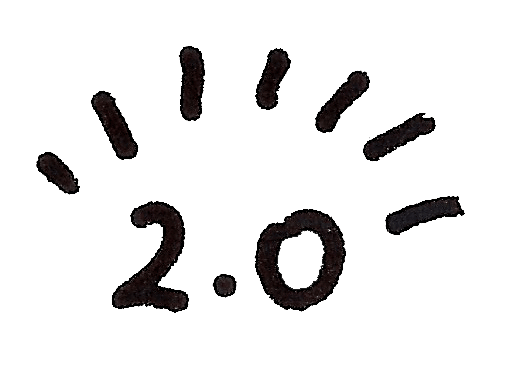Mobile Strategies for Pharma
Mobile Strategy for pharma: engage all stakeholders on their terms
Get ready for CRM 2.0
Andrew Tolve explores why social and mobile media are the next frontiers in customer relationship management (CRM)

A new study co-produced by ISM, a leading CRM research and advisory firm, found that nearly 50 percent of the study’s 440 pharma sales professionals and executives reported using or planning to implement a mobile CRM platform within the next two years.
On the social side, 43 percent said they thought social media CRM integration could be advantageous to sales management and lead generation.
“This is something that’s on the map of every CEO and every CIO,” says Nagesh Bhinde, principal at updateCRM, a CRM software provider that co-produced the study with ISM.
“They want to know how to leverage these technologies to stay in front of competition.”
At the same time, Bhinde points out that actual implementation of enterprise 2.0 technologies in CRM is still lagging.
Despite high adoption of iPads, few companies have integrated CRM capabilities into their new platforms.
Likewise, only 8.1percent of the study’s respondents reported currently using social media for generating sales leads.
It’s thus critical, Bhinde says, to chart out concrete steps that companies can take on the CRM 2.0 journey.
Mobile opportunities
In the past year, pharma companies across the industry have integrated the iPad into their sales forces.
By and large, the theory has been that tablet devices will streamline reps’ interactions with physicians and allow them to present more information in less time on a more intuitive, interactive platform.
One could have argued, and many did, that such a device alone would provide competitive advantage.
What they overlooked was that so many companies would move so quickly to make tablets standard equipment in the pharma rep arsenal.
These days, more than the device itself, it’s the content on the screen and the software behind that screen that can differentiate a company’s initiatives.
“During the gold rush to the iPad, what a lot of people did was to take functionality that existed on laptops and just drop it into the iPad,” says Bhinde.
“A lot of people missed the fact that the old functionality was not as rich and didn’t leverage the true power of the iPad.” (For more on pharma’s use of the iPad, see Future pharma: Making the most of the tablet takeover and Will the iPad kickstart a pharma sales and marketing revolution?)
One key stepping stone on the CRM 2.0 journey, therefore, is to integrate software that turns tablets and other detailing devices into real-time retrievers of valuable customer data.
Software like updateCRM’s Revolution or Veeva’s “iRep” allow companies to use mobile devices to execute traditional CRM functions like activity management, call expense management, call planning and routing, call reporting, and customer profiling.
With the proper CRM software, reps can simply swipe right or left on a screen to indicate how a physician has responded to a slide or a presentation.
As a result, reps can collect and record customer feedback in real time, enabling companies to hone in on key customers, improve segmentation and better tailor marketing campaigns.
“Mobile devices are convenient, but CRM turns them into platforms that can truly add value,” says Bhinde.
Social steps
Detailing physicians, of course, is just one piece of the CRM puzzle.
As the number of stakeholders in pharma increases, there are naturally more customers to manage and more voices to listen to.
Nowhere is this more apparent than online, where social media has given a platform to anyone with a keyboard and a basic Internet connection.
The prospect of combing through every patient forum, chat group, Twitter feed and Facebook thread to monitor the discussion around a product is overwhelming.
With social CRM software, however, marketing coordinators can enlist Web crawlers that tirelessly monitor the discussion across all social media channels, thereby providing immediate and far-reaching insights into patient and physician feedback.
“Social CRM allows them to get it straight from horse’s mouth,” Bhinde says.
“It creates a framework of CRM where messaging comes directly from the customer back to them and ultimately will help companies sell products in a better fashion.”
Companies can bring the conversation to themselves, he adds, by creating platforms that encourage customer interaction, whether it be open to outside viewers or for purely internal use.
Bhinde calls this “social media crowdsourcing,” which can be used for innovation and product development.
Customers can comment on other customers’ comments and vote them up or down.
“Imagine being in product research or product development, trying to do studies and decide good ideas,” says Bhinde. “This changes the game.”
For more on pharma sales and CRM 2.0, join the industry’s other key players at Digital Innovation USA on Nov. 2-3 inBoston, eMarketing Canadaon Nov. 8-9 inToronto, and Mobile Strategies for Pharmaon Dec. 1-2 inLondon.
Also check out Sales & Marketing Excellence Latin America on Oct. 20-21 in Miami, Sales & Marketing Excellence Russia CIS on Oct. 24-25 in Moscow, and Specialty Sales Excellence USA on Nov. 15-16 in Philadelphia.
For more articles on mobile tech, read eyeforpharma’s Future Pharma special report
For all the latest business analysis and insight for the pharma industry, sign up to eyeforpharma’s newsletters.
Mobile Strategies for Pharma
Mobile Strategy for pharma: engage all stakeholders on their terms
